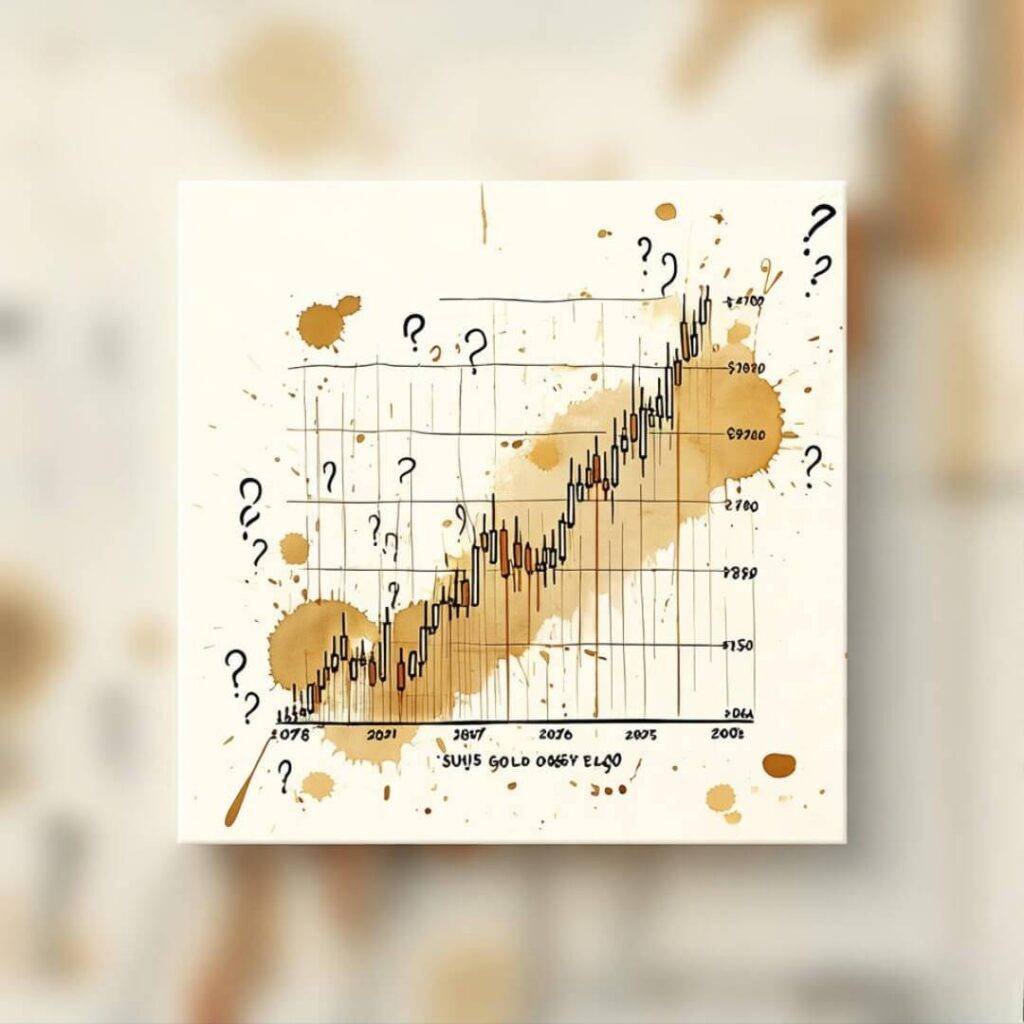Investing in gold hit me like a fever dream last winter, right here in my freezing Chicago apartment, where the radiator clanks like it’s auditioning for a horror movie. I’m no Wall Street hotshot—just a guy who spilled Mountain Dew on his keyboard while Googling “how to invest in gold” at 3 a.m. Picture me, wrapped in a ratty blanket, surrounded by empty ramen bowls, thinking I’d be the next gold tycoon. Yeah, nope. I screwed up plenty, and I’m gonna spill all my dumb mistakes, ‘cause, like, why not? If I can save you from my disasters, that’s something.
Gold’s got this whole shiny, pirate-treasure energy, right? But jumping into gold investment as a beginner? It’s like trying to navigate the L train during a snowstorm—possible, but you’re gonna curse. I’m writing this from my couch, with sirens blaring outside my window and a half-eaten bagel staring at me. So, let’s break down how to invest in gold, step by stupid step, from my very messy, very American perspective.
Why I Fell for Gold Investment (And Maybe You Will Too)
Gold’s not just for rappers and kings—it’s like a safety net when the economy’s acting like a drunk uncle at Thanksgiving. I got hooked on investing in gold after a buddy ranted about inflation at a bar in Wrigleyville. He was sloshed, waving a beer bottle, but it stuck with me. In 2024, with gas prices stupid high and my rent basically robbing me, I wanted something solid. Gold felt like it. Plus, I’d just watched some Netflix doc about the gold rush, and I was, like, weirdly pumped.
Here’s why gold investment’s cool for beginners:
- It’s real: You can hold a gold coin, unlike some crypto scam.
- It’s a hedge: When stocks crash, gold usually chills. Check Investopedia’s gold guide for the full scoop.
- It’s old-school: Gold’s been valuable since, like, ancient Egypt or whatever.
Real talk, though? I thought I’d buy a gold bar and be set. Instead, I dropped $150 on a tiny coin from a sketchy pawn shop and felt like a total clown. More on that in a sec.
Step 1: Figuring Out Why You’re Investing in Gold
Before you even think about buying gold, you gotta know why. Are you prepping for the end of the world? Or just trying to not lose your shirt, like me? I was at this coffee shop in Logan Square, scribbling on a napkin, trying to decide if I wanted gold for safety or to, like, flex a little. My coffee was cold, the barista was judging me, and I realized I was clueless.
Here’s how to set your gold investment goals:
- What’s your deal? Are you in it for long-term safety or hoping gold prices spike? I wanted both, which was… ambitious.
- Budget check: Gold ain’t cheap. I had $400 to play with, which got me basically nothing. Look up prices on GoldBroker.
- Risk vibes: Gold prices can dip. I checked my coin’s value a week later and lost $15. Felt like a punch to the gut.

Step 2: Picking Your Type of Gold Investment
Okay, so investing in gold isn’t just buying shiny stuff. There’s options, and I totally botched this. I walked into a pawn shop—smelled like stale cigarettes and desperation—and bought a coin without a clue. Don’t do that. Here’s the deal:
- Physical gold: Coins, bars, maybe jewelry. It’s cool to hold, but you gotta store it. Mine’s in a sock drawer, which is, uh, not smart.
- Gold ETFs: Funds that track gold prices, like SPDR Gold Shares (GLD). No storage drama, but no shiny toys either. See ETF.com.
- Gold stocks: Mining companies, like Barrick Gold. Cheap but risky. I lost $40 in two weeks.
- Gold futures: Way too complicated for newbies. I didn’t even try.
I spent a night hunched over my laptop, taco crumbs everywhere, researching ETFs. Should’ve started there instead of playing Indiana Jones at the pawn shop.

Step 3: Where to Buy Gold (Without Getting Ripped Off)
Buying gold is where it gets dicey. I learned this the hard way at that pawn shop in Logan Square. The guy had a gold tooth—ironic, right?—and I overpaid for a coin ‘cause I was too awkward to haggle. Here’s how to buy gold without looking like a total noob:
- Legit dealers: Stick to big names like APMEX or JM Bullion. They’re not gonna scam you.
- Check prices: Gold has a “spot price” (see Kitco). Add a small premium, but don’t get hosed.
- Skip the sketchy stuff: Those late-night TV ads? Yeah, no. I almost fell for one at 2 a.m., half-asleep.
Pro tip: Start small. I blew most of my budget on that coin, and now I’m paranoid it’s gonna get stolen. My apartment’s not exactly a fortress.
Step 4: Storing Your Gold Investment (Or Not)
If you buy physical gold, you need a plan. I had zero. My coin’s in a sock drawer with some old AA batteries and a pizza menu. Every noise in my building makes me think someone’s jacking my gold. Here’s what I should’ve done:
- Safe deposit box: Banks have ‘em for like $60 a year. Wish I’d known.
- Home safe: A decent one’s $150+, better than my sock drawer.
- ETFs or stocks: No storage needed. My ETF shares are just chilling in my Robinhood account.

Step 5: Keeping Up With Your Gold Investment
Gold prices move, and you gotta stay on it. I check Bloomberg’s gold tracker like it’s my ex’s TikTok. First week, my coin’s value dropped $10, and I panic-sold some stock. Dumb move. Here’s what I figured out:
- Chill out: Gold’s a long-term thing. Prices dip, but they bounce back.
- Use apps: I’m obsessed with the Gold Live! app. Real-time prices, no stress.
- Don’t overthink: I spent hours staring at charts, thinking I was a genius. Spoiler: I’m not.
Wrapping Up My Gold Investment Chaos
Look, investing in gold is a wild trip. I’m still learning, still screwing up, but it’s kinda fun. My apartment’s a disaster, my sock drawer’s a terrible safe, and I’m no millionaire, but I’m figuring it out. If you’re a beginner, go slow, research like crazy, and don’t trust pawn shops. Seriously, just don’t. Got your own gold investment stories? Drop ‘em in the comments—I’m dying to hear.




